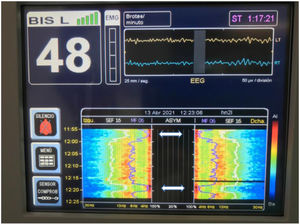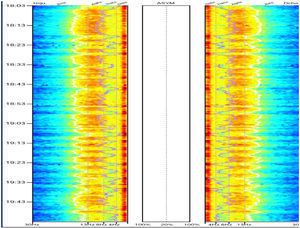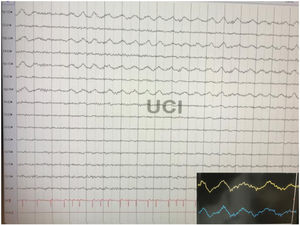A patient was admitted due to super-refractory status epilepticus. After 20 days of treatment with levetiracetam, lacosamide, perampanel and the continuous infusion of midazolam and propofol to achieve electroencephalographic burst suppression, reduction of the anesthetics was started. Point of care spectral matrix (SM) and bispectral index monitoring revealed brief periods of decreased electroencephalogram (EEG) activity at delta frequencies (Fig. 1, white arrows, purple line = median of frequencies), unrelated to drug administration. On exporting the SM data to PDF format, paroxysmal repetition of these periods was observed (Fig. 2). Conventional EEG confirmed the presence of frontal intermittent rhythmic delta activity (FIRDA) (Fig. 3). The overlapped morphology of the waves displayed on the monitor BIS® monitor are shown in Figure 3 (bottom).
The Impact Factor measures the average number of citations received in a particular year by papers published in the journal during the two preceding years.
© Clarivate Analytics, Journal Citation Reports 2025
SRJ is a prestige metric based on the idea that not all citations are the same. SJR uses a similar algorithm as the Google page rank; it provides a quantitative and qualitative measure of the journal's impact.
See moreSNIP measures contextual citation impact by wighting citations based on the total number of citations in a subject field.
See more










